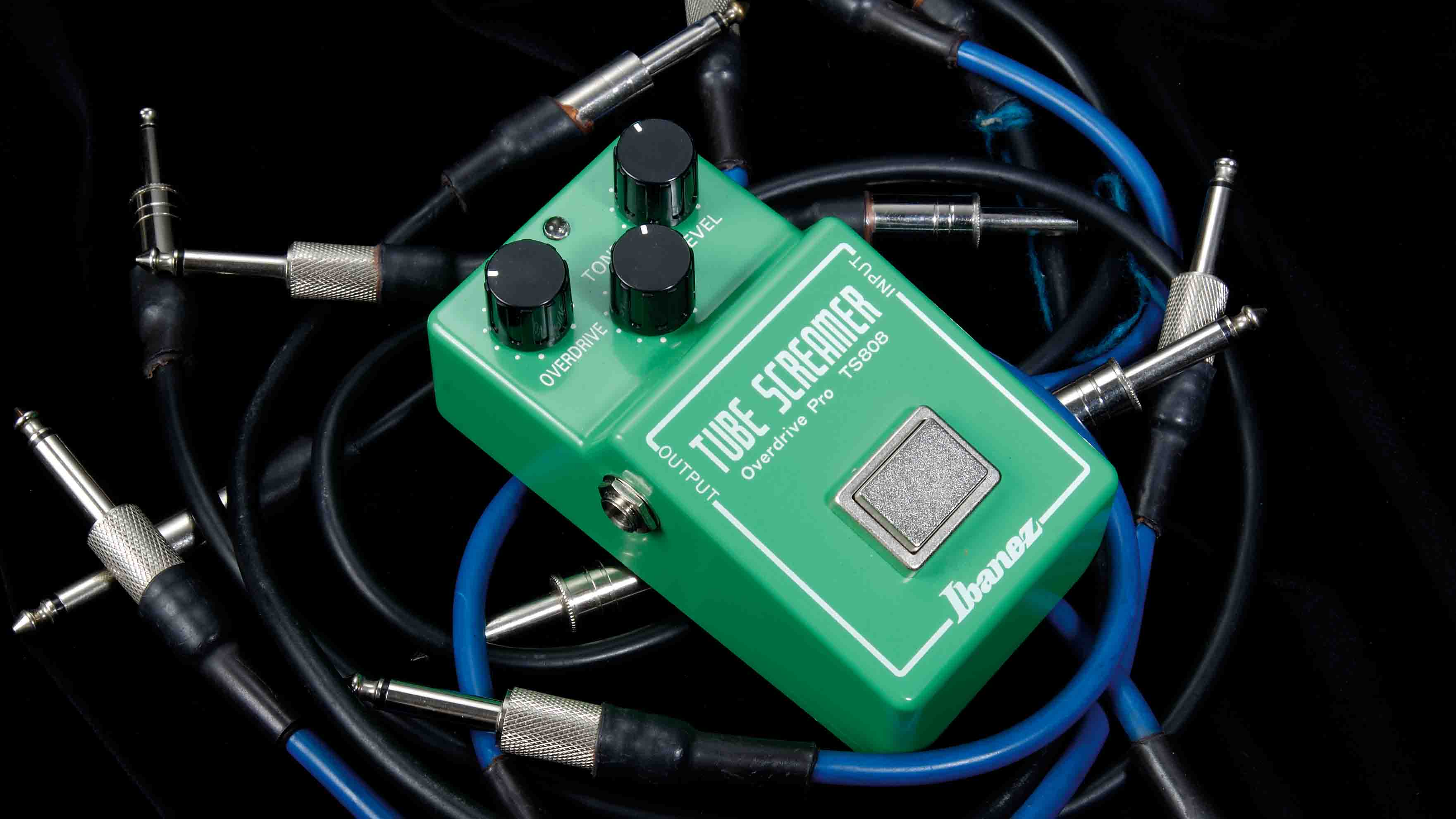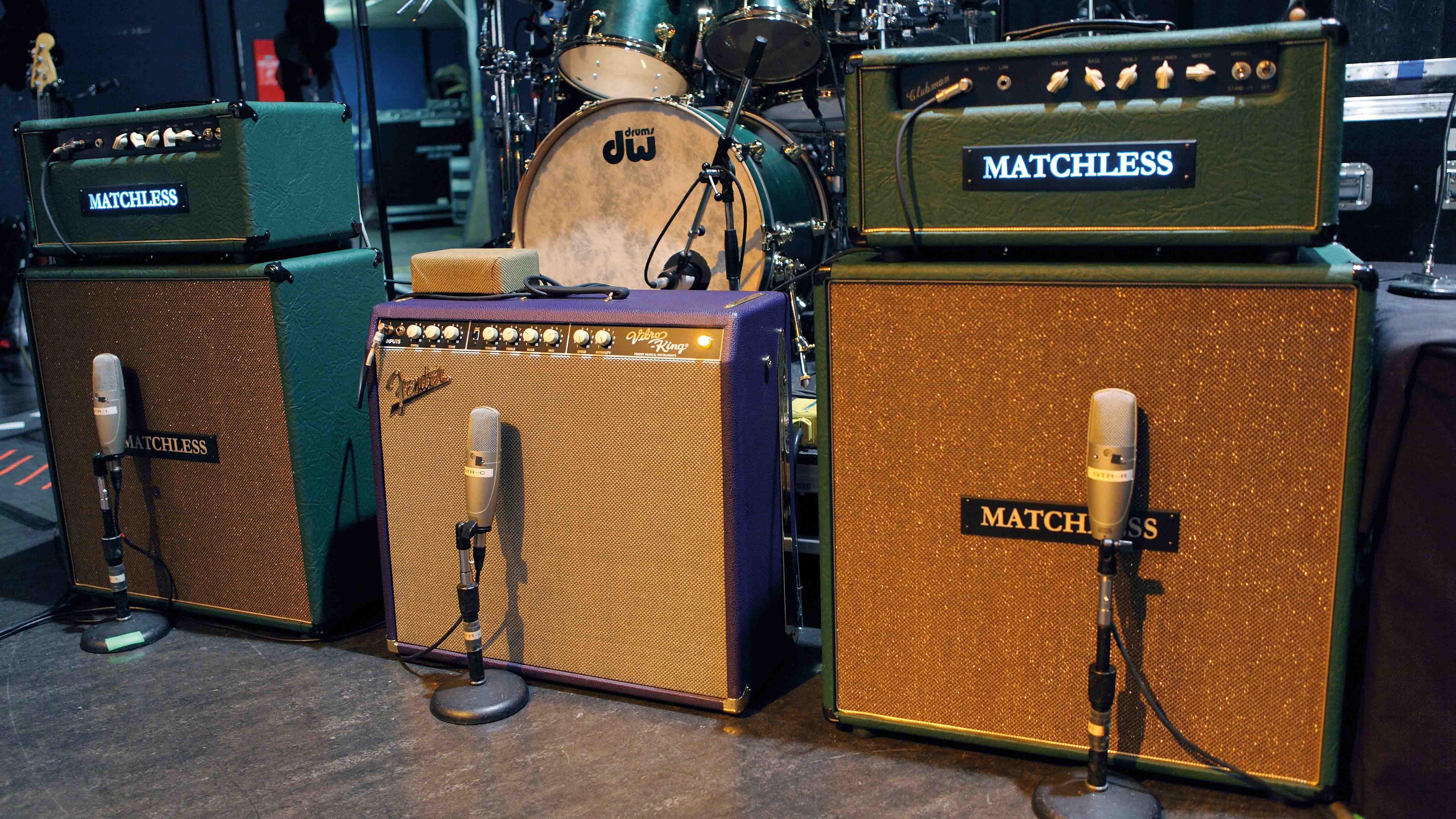
Introduction
Great tone is crucial to blues playing. Blues is all about sensitivity and self-expression, so tonal subtlety, rather than the sledgehammer approach, is the name of the game.
We caught up with some leading tone experts, including effects guru Daniel Steinhardt of TheGigRig and Tim Mills of boutique pickup maker Bare Knuckle, to find out what tone tweaks will get your mojo workin’.
For more tone advice, check out our guide to better electric guitar tone: 50 secret tips.
Don't Miss
Get better electric guitar tone: 50 secret tips

1. Find the amp first
Daniel Steinhardt of TheGigRig says you need to match your guitar with the ideal amplifier before you think about adding overdrive pedals to the equation.
“The most important thing for good blues tone is to make sure that you’re 100 per cent happy with the sound of the amp itself before you add any other effects,” he says.
“Without anything else on, plugging straight into the amp, you need to be able to express yourself – and the sound of that amplifier has to connect with you. Until you get to that point, even the best overdrive pedal in the world is not going to be a magic bullet.”
2. Be dynamic
“Blues is very much about self-expression, and to carry that off, you need good dynamic range [sensitivity to the nuances of hard and soft picking],” says Daniel Steinhardt of TheGigRig.
“I’ve had guys come to me with ultra-high-gain humbuckers in their guitars who wonder why they can’t get a good blues sound.”
Dynamic response is part of what makes blues ‘talk’ so much – the sheer lack of compression
The problem is that hot humbuckers achieve extra output at the expense of dynamic range, Daniel explains.
“That’s why so many blues players like single coils or vintage PAF humbuckers, because they’re typically lower-output pickups that retain a lot more dynamics.”
Tim Mills of Bare Knuckle pickups agrees.
“Dynamic response is part of what makes blues ‘talk’ so much – the sheer lack of compression. As always, there are a few exceptions: the very earliest Tele coils are extremely hot and fat, and a couple of blues players made their mark with that as part of their tone.
“But by and large, the majority of 50s blues players used pickups of moderate output that were typically wound by hand.”
3. Steel yourself
This one’s for those who have Strats with a zinc or leaded-steel vibrato block (ie, nearly all of them). Try swapping the standard vibrato block for a non-leaded steel replacement – Callaham makes the best ones.
If you play loud and live, you’ll hear a noticeable improvement in the sustain, depth and focus of your tone. Make sure you get the right size for your guitar, though.
4. Make the most of midrange
Cranking your amp up or using an overdrive pedal will both tend to compress your tone – in other words, make quiet sounds louder and loud sounds quieter. In its place, compression can be a good thing, making each note sound fatter, smoother and more sustaining.
Add too much compression, however, and you’ll lose dynamic range – namely, the subtle variations in volume and intensity that blues players use to such telling effect when they pick the strings.
So, how do you get the best of both worlds? The key is to compress ear-pleasing midrange frequencies to help them sing and sustain, but leave the rest of your sound free to respond dynamically to your touch.
That’s why the famous Tube Screamer overdrive is so useful for blues, as Daniel Steinhardt of TheGigRig explains.
“When you run a mid-rich overdrive such as the Tube Screamer into an amplifier that’s cranked to the point where it’s starting to break up, you don’t get an overall compression of all the frequencies; the mid frequencies push into compression first. It’s a great sound.”
5. Match Fenders with Screamers
Tube Screamers, and other midrange-boosting overdrives, such as Lovepedal’s Eternity Drive, can be a good match with classic Fender amps, as such amps tend to have abundant bass and treble but relatively weak midrange. If you want fat, screaming tone from your US-voiced amp, then teaming it with a mid-hump overdrive is a great way to balance out your lead sound.

6. Swap cables
The longer your guitar lead, the more treble-sapping capacitance it will have. High capacitance is more common in cheaply made leads, but it’s important to say it’s not necessarily a bad thing.
If you want a zestier, brighter blues tone, try using a shortish cable with a capacitance figure of less than 100pF/m. Likewise, if you have a bright-sounding guitar and want to tame it slightly for a more vintage blues tone, try a longer cable with 140pF/m or higher. High capacitance also shifts the frequency peak of the pickup lower down the spectrum.
7. Play in Eb
Clearly not universally applicable, but it’s astounding to hear the sheer difference in tone that just one semitone down can bring. Jimi knew it, SRV knew it, Philip Sayce knows it. Every string down a semitone – as long as the rest of the band joins you, you will sound bigger.
8. Pick a perfect PAF
Gibson PAF humbucker tone is the voice of so many great British blues recordings, but they varied quite a lot. So, what represents the ultimate PAF ’bucker spec? Tim Mills of Bare Knuckle Pickups, who’s analysed hundreds of PAFs, gave us his view.
“To me, I would be looking at the better PAFs of the late 50s. I don’t tend to get too wrapped up in the DC resistance of them, because the later ’59 ones are often literally overflowing with wire, and I’ve come across some with very high DC readings that sound absolutely amazing but just don’t correlate with what a coil with such a high DC reading ought to sound like.
“When I talk about high, I’m not talking about 14k, of course, but 8k to 9k readings. That would normally produce quite a dull-sounding pickup if it came off a modern mass-production line.
“But on pickups of that time you’ll find that the coils are mismatched – totally different numbers of turns on each coil – and the windings are quite loose as well, which is why the bobbins look so full. And they’re not wax-potted, so put all that into the mix and you get a very lively response from the pickup, which results in a very dynamic feel, because it’s right on the edge [of feedback] all the time.
“It’s something to control, but which also allows you to ‘speak’ through it very effectively.”

9. Dial in your amp
Matt Schofield, UK blues artist and tone hero, shared this advice on how to set up any amp for optimal blues-rock tone, a few issues back.
“I’ll tell you how to dial in any amp in the world and have it sound as good as it can. I dial any amp in like this, because I do a lot of fly-in gigs, and I’m not always able to take my own amps. Usually, it’s a Fender ’65 Twin Reissue or the Hot Rod amps – sometimes a Marshall DSL. But whatever it is, this is how it works for me.
“You’ll find that every pot has an obvious cusp point in its rotation – every single one – where it goes from not doing much, to where it really kicks in. So, I sweep through the pots one by one and find those spots. All amps will do this, bass is especially easy to hear… nothing, nothing, nothing, then ‘Bang!’, there it is!
With everything set right on the cusp, you can push it over by digging in, or pull it back by playing softer
“Gain is just the same, master… and so on. Maybe reverb not so much – put that where you like it – but all the others have a strongest sweep point in the rotation, so I find it and that’s where it gets set! It’s the same with any pedals, all drives and tones.
“If you do that, the amp is set as evenly as it can be: not too trebly, not too dark. With everything set right on the cusp, you can push it over by digging in, or pull it back by playing softer. It makes everything really responsive and sensitive to what you do. The rest is up to you!”
10. Fit low-gain preamp valves
As we’ve seen, turning down the gain – and thus the compression – a little can yield a really expressive, dynamic blues tone. In fact, some may want to go even further and fit lower-gain preamp valves to their amps.
The preamp section of your Fender-style valve amp will usually have a 12AX7 valve in the first and second positions (the first and second preamp valves). If you find that your amp sounds in any way harsh, edgy or breaks up too quickly, then try a lower-gain 5751 instead – first in V1, then in V2. Stevie Ray Vaughan liked them, so the legend goes.
11. So, what does the pickup expert use?
After Tim Mills of Bare Knuckle Pickups gave us his thoughts on vintage PAFs, we couldn’t help wondering what pickups he himself uses for blues tones, given that he can make himself anything he wants?
Unsurprisingly, Tim plays Bare Knuckle pups in his blues band, but his personal choices are nonetheless revealing.
“In a Les Paul I favour a Riff Raff bridge, which has a shorter Alnico V magnet, which adds a little bit more bite. And this is something that you see in [Gibson humbuckers] from late 1960 to 1961. That’s a personal preference of mine for a Jimmy Page-type bite. I’ll partner that with either an Alnico II or an Alnico IV-powered neck pickup, so either a Mule or a Stormy Monday, if I’m playing a Les Paul.
“In Strats, I play something I call ’63 Veneer Boards, which have the smaller diameter Alnico V magnets, and heavy Formvar-wound coils. I’ve found they’ve got all the hollow woodiness anybody could ever want and the power range seems just right for anything, even if you want to move into much hotter blues and hard rock territory, but you’ve still got that dynamic response.
“And then in the Teles, I like a Flat ’50 bridge, which is kind of Broadcaster spec, so we’re back to a hotter coil. Not insane, but it’s still a beefier tone. But then I’m playing a maple-’board Tele, so I find that complements the maple really well, it just sort of fills it out nicely.
“And then I use our Flat ’52 neck, which is wound with 42-gauge wire, whereas most Tele neck pickups are wound with 43 gauge and so it gives a round, plummy, quite full tone. When you wind them with a 42, you get the spank back and it starts leaning toward a Strat-like sound. You get this gorgeous, really open clean tone out of it, and I like that combination on a maple-’board Tele.”

12. Mind your head
Powerful amps with lots of clean headroom, such as a late-model Fender Twin, offer bags of projection and clarity, but can sound rather too clinical and clean in a blues context. By their very nature, they’re not designed to break up warmly and naturally unless you’re playing at punishing volume or using an attenuator. So, what’s the answer?
Daniel Steinhardt says that if you can find an overdrive pedal that sounds amp-like to begin with, you can keep all the poke of your powerful amp, but also achieve warm, authentic drive tones at sensible volumes.
“It’s about finding pedals that sound like an amp that’s naturally compressing. When Robben Ford is away on tour and can’t use his Dumble, he uses Red Knob [Fender] Twins with some sort of Hermida Audio Zendrive variant and he’ll sound amazing.
“So, using pedals like those Zendrives into amplifiers with huge headroom is a fantastic choice – it’s a really great way to get that compressed-midrange, Dumble-type tone.”
13. Use two amps
Ever wondered how somebody’s blues-rock tone is distorted yet still clean and clear? They might be using two amps: one set to be very distorted, the other much cleaner or emphasising a specific set of frequencies. Mixed together, the sound becomes massive. Try it.
14. Raise your action
Have we taken leave of our senses? Nope. If you play blues or classic rock, your strings need to vibrate, and they can’t do that fully if they’re rattling on the frets. It’s harder work, but in classic genres, a slightly higher action simply sounds better. Yes, it does.
15. Try the ‘singlebucker’ sound
Got single-coil pickups but want to imitate fat ’bucker tone? First, add tons of overdrive to your sound via a decent mid-rich pedal – two pedals, preferably. Don’t be tempted to turn the treble down on your amp or pedals: around six to eight, no lower.
Keep the guitar’s volume up full, but knock the bridge pickup tone control down to about half or lower. Sounds much more like a humbucker, right? Vintage-style Strats don’t have a tone pot wire to the bridge pickup, so you’ll need to mod this.

16. Keep it simple
Tim Mills of Bare Knuckle recommends keeping your rig simple when playing blues, if you want to focus on expressing yourself.
“Personally, I leave my amp alone, I don’t switch anything. I do it all off the guitar with a J Rockett Archer overdrive for any extra if I want it. I will run – depending on where we’re playing – a little bit of delay and reverb in one of the loops, just to wet the room up if it needs it.
“If I can get away with it, I’d rather not use anything, because it’s more things to go wrong for starters, and it’s more rubbish on the floor to step over!”
17. Be committed
The finest blues guitarists make every note count and they play them with commitment and pride
Simon Law, our very own Tone Doctor and tech to blues luminaries such as Robben Ford, gave us this blues tone advice.
“I’ve been fortunate enough to work alongside some of the finest blues guitarists on the planet, and the main thing that struck me about all these guys was, they’re loud! And when I say loud, I mean they commit to every note and make every note count and they play them with commitment and pride.
“They run their amplifiers loud and use the volume controls on their instruments to vary the dynamic range. They also use their own ‘built-in’ dynamics to control volume, pick gently when you need to be quiet, dig in when you want to roar! Play 1,000 notes with a cruddy tone and nobody will remember you; play one note with a strong, committed tone and you’ll light up the room.”
18. Forget everything we just said…
“At the end of the day, it really is horses for courses,” Daniel Steinhardt of TheGigRig concedes.
“A lot of it comes down to the way each player attacks the string. You can have one player who’ll plug a humbucking guitar into a Super Overdrive pedal and a cranked Marshall, but still get a really good, expressive blues tone.
“It’s such a personal thing – there are some guidelines, but really every player needs to go out and try lots of gear and see if it works for them. At the end of the day, what you’re after is a connection. And it’s basically about turning off the ‘gear lust’ button and just being really honest about how the gear feels to you.”
Don't Miss
Get better electric guitar tone: 50 secret tips
Guitarist is the longest established UK guitar magazine, offering gear reviews, artist interviews, techniques lessons and loads more, in print, on tablet and on smartphones
Digital: http://bit.ly/GuitaristiOS
If you love guitars, you'll love Guitarist. Find us in print, on Newsstand for iPad, iPhone and other digital readers


